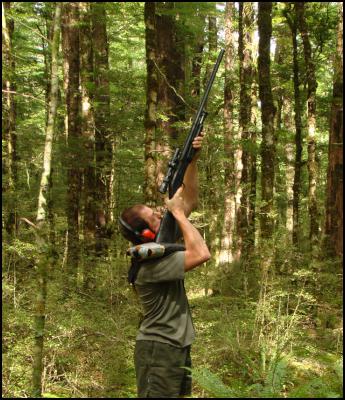Sampling shows beech seeding widespread
Sampling shows beech seeding widespread

Results from beech forest sampling across the South Island confirm a widespread seeding event is underway, Department of Conservation scientists say.
Over the past two months, seed on beech trees has been measured at 23 sites from north-west Nelson to Fiordland by shooting branches from trees to get an early indication of likely autumn seed fall.
DOC scientist Graeme Elliott says the seed shooting results confirm the beech mast is proving to be a widespread event, as initially predicted from extensive spring flowering.
Dr Elliott says the amount of seed being
produced varies in different areas from very heavy to more
moderate but that virtually all forests sampled are
seeding this year in what is looking like a 10-20 year
event.
“The key issue is that this is widespread seeding and looks set to fuel an explosion in forest predators like rats and stoats in a large number of places.”
“With the seed fall now well underway it’s expected rodent numbers will begin to increase towards a peak in the coming summer when stoat numbers will also explode.”
Dr Elliott says field teams will be closely monitoring rat and stoat numbers over the next few months for early signs of rising numbers.
The Department of Conservation says plans to counter the expected rising predator numbers are already well underway.
The Battle for our Birds pest control response—announced by the Minister of Conservation in January—aims to protect vulnerable native bird, bat and snail species with aerial 1080 and ground-based pest control operations in multiple beech forest areas the length of the South Island.
DOC field staff are monitoring seed fall
and rodent and stoat numbers in these
areas and
consulting with affected communities. This information will
inform decisions about the pest control response in the
coming months including exact operational areas, timing and
mix of pest control tools.
–Ends–


 Employers & Manufacturers Association: Work-related Injuries In Manufacturing Create $1.23 Billion Economic Burden On NZ
Employers & Manufacturers Association: Work-related Injuries In Manufacturing Create $1.23 Billion Economic Burden On NZ Consumer NZ: Consumer NZ Questions Supermarket Specials: Are They Really Saving You Money?
Consumer NZ: Consumer NZ Questions Supermarket Specials: Are They Really Saving You Money? NIWA: October Climate Summary - A Mild Month Overall, Very Wet For Much Of The South Island
NIWA: October Climate Summary - A Mild Month Overall, Very Wet For Much Of The South Island Bill Bennett: I didn’t leave WordPress, WordPress left me
Bill Bennett: I didn’t leave WordPress, WordPress left me The Reserve Bank of NZ: Financial System Remains Resilient Amidst Economic Downturn
The Reserve Bank of NZ: Financial System Remains Resilient Amidst Economic Downturn Entertainment Venues Association of NZ: New Ticketing Code To Enhance Confidence Of Ticket Buyers And Event Providers In New Zealand
Entertainment Venues Association of NZ: New Ticketing Code To Enhance Confidence Of Ticket Buyers And Event Providers In New Zealand



